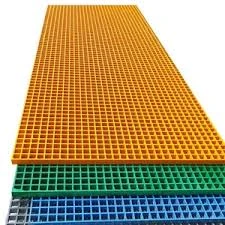
-
 Afrikaans
Afrikaans -
 Albanian
Albanian -
 Amharic
Amharic -
 Arabic
Arabic -
 Armenian
Armenian -
 Azerbaijani
Azerbaijani -
 Basque
Basque -
 Belarusian
Belarusian -
 Bengali
Bengali -
 Bosnian
Bosnian -
 Bulgarian
Bulgarian -
 Catalan
Catalan -
 Cebuano
Cebuano -
 China
China -
 China (Taiwan)
China (Taiwan) -
 Corsican
Corsican -
 Croatian
Croatian -
 Czech
Czech -
 Danish
Danish -
 Dutch
Dutch -
 English
English -
 Esperanto
Esperanto -
 Estonian
Estonian -
 Finnish
Finnish -
 French
French -
 Frisian
Frisian -
 Galician
Galician -
 Georgian
Georgian -
 German
German -
 Greek
Greek -
 Gujarati
Gujarati -
 Haitian Creole
Haitian Creole -
 hausa
hausa -
 hawaiian
hawaiian -
 Hebrew
Hebrew -
 Hindi
Hindi -
 Miao
Miao -
 Hungarian
Hungarian -
 Icelandic
Icelandic -
 igbo
igbo -
 Indonesian
Indonesian -
 irish
irish -
 Italian
Italian -
 Japanese
Japanese -
 Javanese
Javanese -
 Kannada
Kannada -
 kazakh
kazakh -
 Khmer
Khmer -
 Rwandese
Rwandese -
 Korean
Korean -
 Kurdish
Kurdish -
 Kyrgyz
Kyrgyz -
 Lao
Lao -
 Latin
Latin -
 Latvian
Latvian -
 Lithuanian
Lithuanian -
 Luxembourgish
Luxembourgish -
 Macedonian
Macedonian -
 Malgashi
Malgashi -
 Malay
Malay -
 Malayalam
Malayalam -
 Maltese
Maltese -
 Maori
Maori -
 Marathi
Marathi -
 Mongolian
Mongolian -
 Myanmar
Myanmar -
 Nepali
Nepali -
 Norwegian
Norwegian -
 Norwegian
Norwegian -
 Occitan
Occitan -
 Pashto
Pashto -
 Persian
Persian -
 Polish
Polish -
 Portuguese
Portuguese -
 Punjabi
Punjabi -
 Romanian
Romanian -
 Russian
Russian -
 Samoan
Samoan -
 Scottish Gaelic
Scottish Gaelic -
 Serbian
Serbian -
 Sesotho
Sesotho -
 Shona
Shona -
 Sindhi
Sindhi -
 Sinhala
Sinhala -
 Slovak
Slovak -
 Slovenian
Slovenian -
 Somali
Somali -
 Spanish
Spanish -
 Sundanese
Sundanese -
 Swahili
Swahili -
 Swedish
Swedish -
 Tagalog
Tagalog -
 Tajik
Tajik -
 Tamil
Tamil -
 Tatar
Tatar -
 Telugu
Telugu -
 Thai
Thai -
 Turkish
Turkish -
 Turkmen
Turkmen -
 Ukrainian
Ukrainian -
 Urdu
Urdu -
 Uighur
Uighur -
 Uzbek
Uzbek -
 Vietnamese
Vietnamese -
 Welsh
Welsh -
 Bantu
Bantu -
 Yiddish
Yiddish -
 Yoruba
Yoruba -
 Zulu
Zulu
Innovative Solutions for FRP Tank Design and Applications in Various Industries
Understanding FRP Tanks Revolutionizing Storage Solutions
Fiberglass Reinforced Plastic (FRP) tanks have emerged as a pivotal component in various industries, such as water treatment, chemical storage, and agriculture. Their unique structure and properties provide significant advantages over traditional storage methods, making them an increasingly popular choice for businesses looking to enhance safety, durability, and efficiency.
What is FRP?
FRP, or Fiberglass Reinforced Plastic, is a composite material made from a polymer matrix reinforced with fibers, typically glass fibers. This combination results in a lightweight yet incredibly strong material. FRP tanks benefit from this robust construction, making them resistant to a variety of environmental conditions, including corrosion, temperature fluctuations, and impact. The resilience of FRP significantly extends the lifespan of storage solutions, offering a long-term investment for companies that require reliable infrastructure.
Advantages of FRP Tanks
1. Corrosion Resistance One of the standout features of FRP tanks is their exceptional resistance to corrosive substances. Unlike metal tanks that may rust or degrade over time when exposed to chemicals, FRP tanks maintain their integrity when storing various liquids, from water to aggressive chemicals. This characteristic not only enhances the safety of the stored materials but also reduces the need for frequent replacement or repair.
2. Lightweight and Cost-Effective Compared to conventional metal tanks, FRP tanks are considerably lighter. This lightweight nature simplifies transportation and installation, lowering associated labor costs and facilitating mobility in industrial settings. Moreover, the reduced need for heavy support structures due to their inherent strength results in overall cost savings.
frp tank

3. Customization Options FRP tanks offer extensive customization capabilities. Manufacturers can design tanks to meet specific requirements, such as size, shape, and internal fittings. This adaptability is crucial for industries that require tailored solutions for unique storage challenges.
4. Thermal Insulation FRP tanks exhibit excellent insulation properties, preventing external temperature fluctuations from affecting the stored contents. This aspect is particularly valuable for industries dealing with temperature-sensitive materials, ensuring the quality and stability of the substances held within.
5. Environmental Impact and Sustainability The production of FRP tanks can involve sustainable practices, utilizing recyclable materials in their construction. Additionally, their longevity and reduced maintenance needs contribute positively to environmental sustainability within industrial operations, minimizing waste over time.
Applications of FRP Tanks
The versatility of FRP tanks makes them suitable for a range of applications. In the water treatment industry, they are often employed for the storage of potable water, chemicals used in treatment processes, and wastewater. In the chemical and petrochemical industries, FRP tanks provide a safe method for storing corrosive substances, preventing potential leaks and environmental hazards. Additionally, agricultural sectors use FRP tanks for the storage of fertilizers and other chemicals.
Conclusion
As industries seek safer, more efficient, and cost-effective storage solutions, the adoption of FRP tanks is expected to grow. Their unique properties address numerous challenges associated with traditional storage methods, making them an attractive choice for businesses of all sizes. With their endless customization possibilities, resilience to harsh environments, and commitment to sustainability, FRP tanks represent the future of storage technology. Whether for chemical processing, water treatment, or agricultural applications, FRP tanks are set to play a crucial role in shaping how we approach storage in an increasingly complex industrial landscape.









